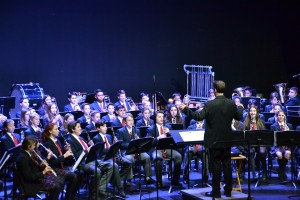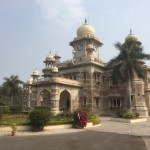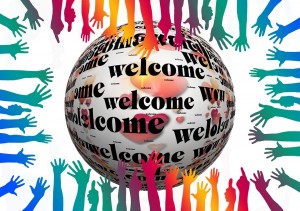 As our high school students prepare for exams we should all be reflecting on the journey that every student has experienced since we first gathered in late August. It’s a journey of learning and personal growth with a notable impact on mind, body and heart.
As our high school students prepare for exams we should all be reflecting on the journey that every student has experienced since we first gathered in late August. It’s a journey of learning and personal growth with a notable impact on mind, body and heart.
This morning I asked each Middle and Senior School student to reflect on their own personal journey – asking, what it has looked like and how it has felt?
Since September each student has gained new knowledge in various subjects. They’ve completed projects, in groups or alone, honed special technology skills, become better critical thinkers. They’ve all certainly experienced proud moments of achievement as well as difficult periods of frustration. I hope they are all learning how to handle both ends of the emotional spectrum well.
On this learning journey teachers have pushed and pulled, challenged and often inspired. Every student’s development and growth is complicated. Yet, as one parent recently declared after an evening of parent-teacher meetings, LCC teachers are “caretakers”. She was very thankful that our teachers are so supportive of our students.
Some of our students are quiet by nature, while some like to speak a lot and are still working on becoming better listeners. All have drawn on their capacity for creativity in their courses, but especially in developing what are called “Studio Habits of Mind” in Art, Drama, Music and Digital Media. This is the capacity to create, refine and improve work. In essence, they are developing skills for personal and academic resilience.
Pride is something we talk about a lot here – and it has often been on display in the classroom and in our many co-curricular activities.
For a large percentage of our students, athletics is a key aspect of the journey and involvement at school. With a focus on fitness, skill development and competition, most students have navigated dozens of practices, demanding coaches and high expectations.
Some teams won league banners while others fell short. However, the highs and lows of athletic competition have been an important part of their personal experience, providing many memorable learning moments.
Beyond sports, LCC students have been very engaged in many interesting activities. Dozens were Open House Ambassadors or hosts for “Student for a Day” events. They have stepped up as members of their Houses, iPride in Middle School, Grad Pride in Senior School as well as Student Council.
The journey has included debating competitions, Model UN, participation in the Destiny Quebec organizing team, Green Team, Yearbook, LCC Reads, Amnesty International, Duke of Edinburgh, Round Square, LCC TV, The Wire, Robotics, Movember, and roles as delegates to leadership conferences in Canada and Singapore. And of course they have all participated in a wide array of service initiatives across this city.
Our students prepared diligently for Monday night’s wonderful Holiday Concert and many are preparing the upcoming Middle and Senior School plays slated for the winter.
So yes, students should prepare well for their exams. But let’s remember, much of what they do here that is important has no exam at all, but does certainly test them. Clubs, activities, various inter-school competitions and performance opportunities are an integral part of personal and character development.
Since August each of our students has been on a marvelous journey. They have exerted a lot of effort, discovered some hidden talents, grown and matured. They should take genuine pride in that. No test or exam required!
Happy & safe holidays!
Chris Shannon – Headmaster





